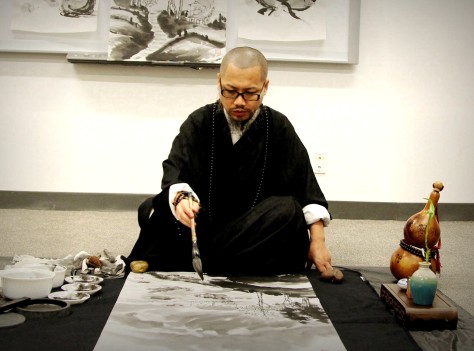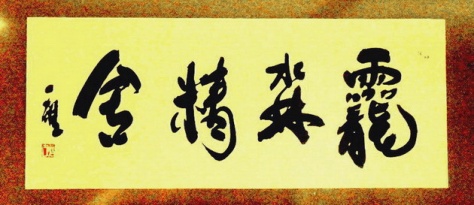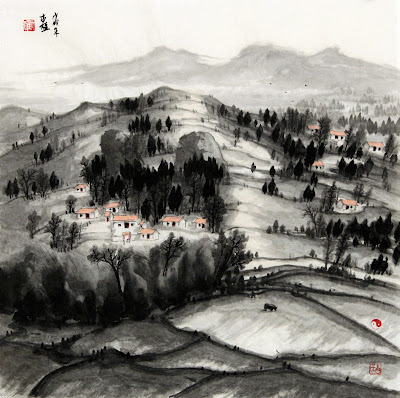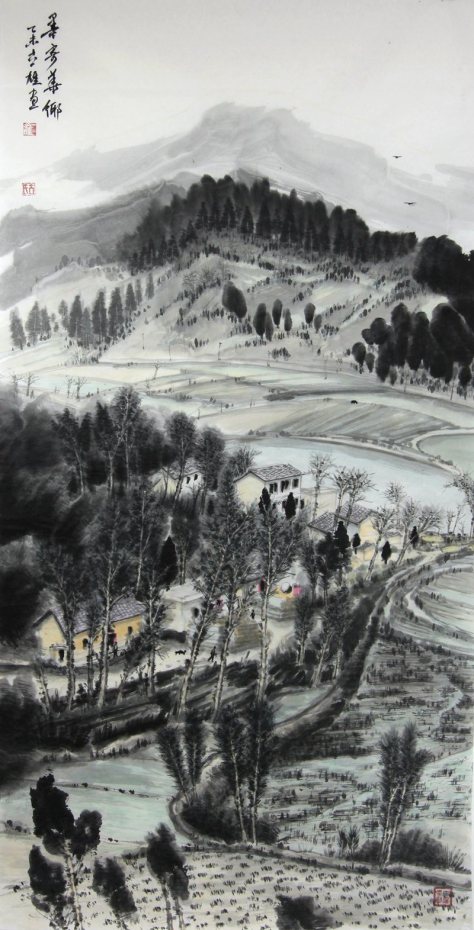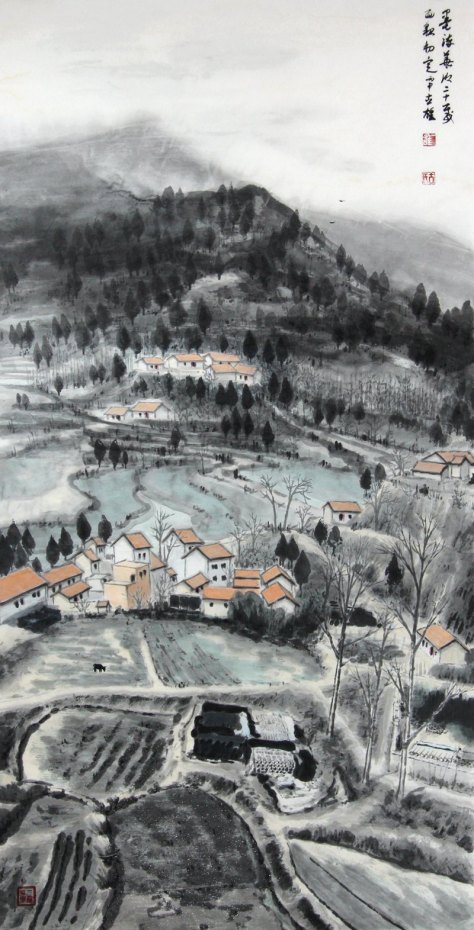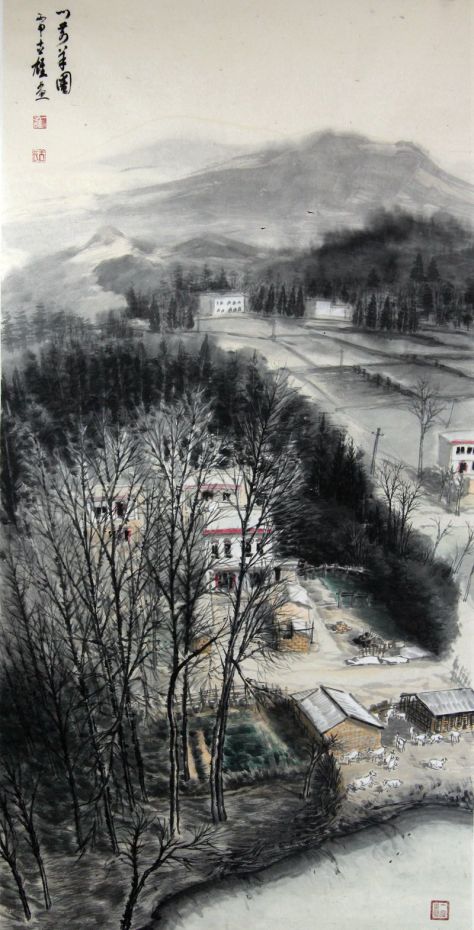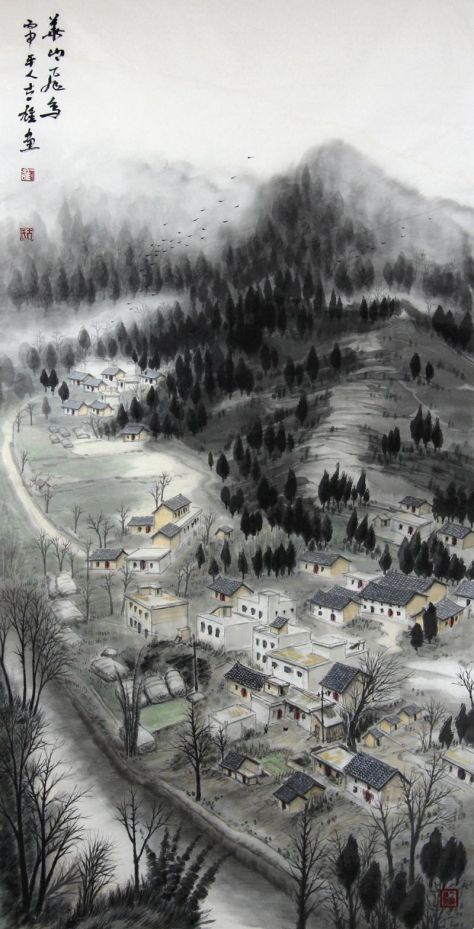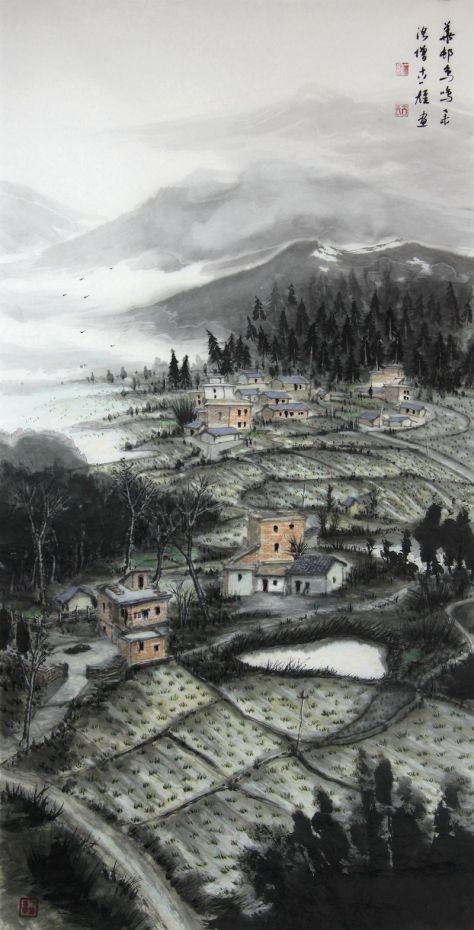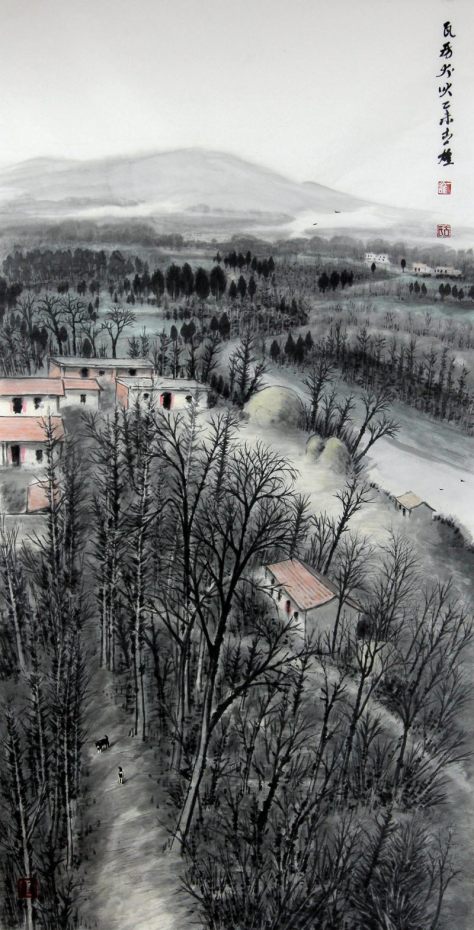(1)一般现在时 Simple Present Tense:(I do)
概念:表示经常性的动作;反复发生的行为及现在的某种状况。
时间状语: always, usually, often, sometimes, every week (day, year, month…), once a week, on Sundays, etc.
基本结构:
1、 be动词;否定形式:am/is/are+not;
I am French. You/we/they are French. He/she/it is French.
I am not old. You/we/they are not old. He/she/it is not old.
2、一般疑问句:把be动词放于句首。
Am I late? Are you, we, they late? Is he, she, it late?
3、否定句:(I/you/we/they+don't ,还原行为动词);第三人称单数(he/she/it+doesn't,还原行为动词)
I/you/we/ they don't like coffee.
He/she/it doesn't like coffee.
4、用do提问的疑问句:把do和does放在句首,同时还原行为动词。
Do I/you/we/they like coffee? yes,I do.
Does she/she/it like coffee? yes,she does.
5、He/she/it肯定句必须行为动词+s;(别的不用)
He/she/it likes coffee.
如:
I live in New York.
John drives a taxi.
The Moon goes round the Earth.
We do not work at night.
He does not drive a bus.
Do you play football?
I go to school every day .
He is always like that . 他总是那样。 (表状态)
He always helps others.(他总是帮助别人。)
The next train leaves at 3 o'clock this afternoon.(下一趟火车今天下午3点开车。)
How often does this shuttle bus run? (这班车多久一趟?)'社斗- 梭子穿梭
When you have finished the report, I will have waited for about 3 hours.(等你完成这份报告('瑞迫特)的时候,我就已经等了将近3个小时了。)
Verbs+ infinitives 不定式
常跟随使用 agree、can / can't afford、intend、 offer、 decide、 expect、 hope、 need、 promise、 refuse、 volunteer、 learn、 plan、 manage、 prepare、 want、 pretend、 would like。
Where do they want to go?They want to go to the park.
Do you want to go? Yes, you do.
Verbs+ gerunds (ing)特定的动名词使用:
常跟随使用 enjoy、avoid、 stop、quit、start、mind、don't mind、doesn't、mind、can't help、 finish、 feel like、miss、 practice、 recommend、 regret、 suggest、
在肯定陈述句中只有使用He/She/It 及物动词+s; I/you/we/they+动词+gerunds (ing)例如:
He enjoys dancing. You enjoy dancing.
否定句 You don't enjoy dancing. He doesn't enjoy dancing.
Does he enjoy dancing? Do you enjoy dancing?
但是只有like、love、dislike、hate有两种表达方式如:
He likes dancing. He likes to dance.
Phrases gerunds短句动词-(飞zs 杰瑞s)
afraid of, amazed by, angry at, bad at, excited about, famous for, good at, happy about, interested in, look forward to, nervous about, plan on, pleased about, sad about, talk about, thank (someone) for, think about, tired of, worried about,

(2)一般过去时 Past Tense:(I did)
概念:过去某个时间里发生的动作或状态;过去习惯性、经常性的动作、行为。
时间状语:ago, yesterday, the day before yesterday, last week(year, night, month…), in 1989, just now, at the age of 5, one day, long long ago, once upon a time, etc.
1、肯定句“主语+行为动词过去式+其他 ” 或 “主语+was/were+其他”
(I、he、she、it /用 was 或 you、we、they / 用were-我儿)
2、否定式:① was / were +not;② 在行为动词前加 didn't + 还原行为动词
3、一般疑问句:
① Was / Were +主语+表语? ② Did+主语+谓语动词原型+其他?
4、肯定句用used to 与提问句统一用Did+use to使用;表示过去的爱好状况,现在不是真的。
Did you use to arrive late?yes, you did. You used to arrive late.
如:
Did he work for us?He didn't work for us. He worked for us.
She often came to help us in those days.
I didn't know you like coffee.
I went to a movie yesterday. 我昨天去看了一场电影。
He always went to work by bike last week.
Did he listen to the radio yesterday?
Where did you go last week?
What were you doing yesterday moming? I was watching TV.
(3)一般将来时:
概念:表示将要发生的动作或存在的状态及打算、计划或准备做某事。
时间状语:tomorrow, next day(week, month, year…),soon, in a few minutes, by…,the day after tomorrow, etc.
基本结构:am/is/are / going to + do动词原形;will / shall + do动词原形.
否定句型:主语 + will/shall + not + 动词原形... (will not=won't;shall not=shan't)
一般疑问句: Shall/Will + 主语 + 动词原形...
其他形式:
am/is/are/ about to + do; am/is/ are to + do;
be +不定式,be to+动词原形,be about to +动词原形
be able to +不定式; be about to+动词原形
例:He is going to work for us.
He will work for us;
He is coming. 这是特殊的用一般现在时 表达将来时态的例子!
Mary won't go to the party.玛丽不会去参加晚会。
Will you be at our next meeting? 我们下次开会你来吗?
Will you be free tonight? —Yes,I will./No,I won't(be free).今晚你有空吗? ——是,我有空。/不,我没有空。
特殊疑问句型:疑问代词/疑问副词 + shall/will + 主语 + 动词原形...
Who will play in the basketball match? 谁将在这场篮球比赛中上场? (就主语提问,陈述句语序)
What will people say? 人们会怎么议论呢? (倒装语序)
如:
Will he come? 他来吗?
Will they be here tomorrow? —Yes,they will./No,they won't.他们明天到这儿来吗? ——是,他们明天来。/不,他们明天不来。
Shall we be back in time? —Yes,we shall./No,we shall not.我们将及时回去吗? ——是的。/不,我们不赶回去。
Who will play in the basketball match? 谁将在这场篮球比赛中上场? (就主语提问,陈述句语序)
What will people say? 人们会怎么议论呢? (倒装语序)
If I have time tomorrow,I think I'll get a haircut.如果我明天有时间,我想去理个发。
He will go shopping tomorrow.
They are going to play basketball next week.

(4)过去将来时
be(was,were)going to+动词原形
be(was,were)about to+动词原形
be(was,were)to+动词原形
肯定句:主语+be(was,were)going to+动词原形~.
否定句:主语+be(was,were)not going to+动词原形~.
疑问句:Be(Was,Were)+主语+going to+动词原形~?
肯定句:主语+would(should)+动词原形~.
否定句:主语+would(should)not+动词原形~.
疑问句:Would(Should)+主语+动词原形~?
He would work for us.
过去一般将来时(would/ should do):
概念:立足于过去某一时刻,从过去看将来,常用于宾语从句中。
时间状语:the next day(morning, year…),the following month(week…),etc.
基本结构:was/were / going to + do;would/should + do.
否定形式:was/were/ not + going to + do; would/should + not + do.
一般疑问句:was或were放于句首;would/should 提到句首。
如:
1) I should go.
2) You knew I would come.
3) They were going to Naning.
用法:
表示从过去的某个时间看将要发生的事。
例:I said on Thursday I should see my friend the next day.(我星期四说我将于第二天拜访我的朋友。)
注意事项:由于过去将来时是由过去时和将来时组合而成的,所以其注意事项可以参考过去时和将来时的相关注意事项。想学习更多英语知识,请关注口袋英语aikoudaiyy
(5)现在进行时 Present Continuous Tense:(I am doing)
概念:暂时性的动作;表示现阶段或说话时正在进行的动作及行为。时间状语:now, look,listen,at this time, these days, etc.
基本结构:be(am/is/are)+doing(动词+ing=现在分词)否定形式:am/is/are + not + doing.
疑问句:Am/Is/Are + 主语 + doing...? 回答:Yes,主语 + am/is/are. No,主语 + am/is/are + not.
Are you leaving already? 你这么早就要走了吗?
Is it raining now? —Yes,it is./No,it isn't.现在下雨吗? ——是的,在下雨。/不,不下了。
Are they helping the old lady? —Yes,they are./No,they aren't.他们在帮助这位老妇人吗? ——是的。/不,没帮助她。
Is he watching TV?
Are they waiting for John?
I am speaking to you. You are reading this.
She is not staying in London. We are not playing football.
He is singing. They are watching TV now
They are cleaning the house. 他们在打扫屋子。
He is brushing his teeth. 他正在刷牙。
Mother is waiting for me. 母亲在等我。
I'm not doing anything right now.我现在没做什么事情。
She is not dancing,but doing exercise.她不是在跳舞,而是在锻炼。
Who are you waiting for? —I'm not waiting for anybody.你在等谁? ——我没在等谁。
What are you doing? —I'm just tying up my shoelaces.你在干什么? ——我在系鞋带。
What are you looking for? —I'm looking for my keys.你在寻找什么? ——我在找钥匙。
What time are you coming back? —I'm not sure what time I'm coming back.你打算什么时候回来? ——我不能肯定我将在什么时候回来。
What's your brother planning to do tomorrow? —He can't decide what to do.你兄弟明天打算做什么? ——他还没定要做什么。
Where are you going? —I'm going home.你到哪去? ——我回家去。
How are you feeling today? —I don't feel very well this morning.你今天感觉怎样? —今天早上我感觉不太舒服。
由于使用了be动词,因此进行时的否定句和疑问句的构成方式与be动词的否定句和疑问句的构成方式相同。
Listen! Birds are singing.听!鸟在歌唱。
Look! the train is just getting into the station.看!火车进站啦。
He is reading now.他在看书。
The river is flowing fast after last night's rain.昨夜下雨后,河水流速很快。
The house is being painted.房子正在上油漆。
常和at present(目前),this week(本周),these days(这几天)等时间状语连用:
We're looking for a house to rent for the summer.我们在找一栋房子想租一个夏天。
Are you trying to find a furnished house? 你是想找一栋有家具的房子吗?
What courses are you studying this term? 你这学期学哪几门课?
Don't take that ladder away. Your father's using it. 别把梯子拿走,你父亲在用。(即不一定现在用)
用arrive(到达),come(到来),go(走、离去),leave(离开)等动词的现在进行时描写行程安排,有“将到达”和“将离去”的意思:
He's arriving tomorrow morning on the 7:30 train.明天早上他将乘7时30分的火车到达。
Christmas is coming soon.圣诞节很快就到了。
I'm leaving England and going to live in Spain.我将离开英国去西班牙定居。
副词always(表示屡次),repeatedly(再三地),forever(老是、不断地)等可与进行时连用,表示不断重复的动作:
She's always helping people.她经常帮助别人。
He's always causing trouble.他总是在制造麻烦。
The little boy is forever asking questions.这小男孩老是没完没了地问问题。

(6)过去进行时 Past continuous Tense (I was doing)
概念:表示过去某段时间或某一时刻正在发生或进行的行为或动作。
时间状语:at this time yesterday, at that time或when引导的谓语动词是一般过去时的时间状语等。
基本结构:was/were+doing
否定形式:was/were + not + doing. 一般疑问句:把(I、he、she、it /用 was 或 you、we、they / 用were)放于句首。
一般疑问句及答语:Was/Were+主语+doing+其它 ;Yes,I主语+was/were./ No,I主语
+wasn't/weren't.
特殊疑问句:特殊疑问词+was/were+主语+doing+其它
He was working when he was alive.
如:
1) What were you doing?
I was jumping.
2) What was the boy doing when the UFO arrived?
He was sleeping.
Was he doing when the UFO arrived? yes, he was.
I was walking past the car when it exploded.
When the car exploded I was walking past it.
The car exploded while I was walking past it.
While I was walking past the car it exploded.
用法:
A) 表示在过去一个比较具体的时间正在发生的动作。
例:Mary was listening to light music 10 minutes ago.(10分钟前,玛丽正在听轻音乐。)
B) 如果when, while这样的时间状语引导词所引导的主从句之一是一般过去时,则另一个句子常用过去进行时。
例:I was washing my hair when you knocked at the front door.(你敲前门时我正在洗头发。)
(7)将来进行时
主语+will + be +现在分词
He will be working for us.=He will work for us.
将来进行时(will be doing)
概念:表示将来某一时刻或某一阶段内将要发生的动作。
肯定句:主语 + shall/will + be + 现在分词... (shall用第一人称,will用于各种人称)
否定句:主语 + shall/will + not + be + 现在分词...
疑问句:Shall/Will + 主语 + be + 现在分词...?
疑问代词/疑问副词 + shall/will + 主语 + be + 现在分词...?
用法:
强调在将来的某个具体时间正在发生的动作或事情。
例:Don't worry, you won't miss her. She will be wearing a red T-shirt and a white skirt at that time.
(别担心,你不会认不出她的。她到时会穿一件红色的T恤衫和一条白色的短裙。)
注意事项:
由于本时态是由将来时和进行时融合在一起的,所以关于本时态的注意事项,可参考"一般将来时"和"现在进行时"的有关注意事项。
(8)过去将来进行时
should(would)+be+现在分词
He said that he would be working for us.=He said that he would work for us.
过去将来进行时:should be doing , would be doing
1.过去将来进行时由主语+should(would)+be+现在分词
2.否定:主语+should(would)+not+be+现在分词
3.疑问:should(would)+主语+be+现在分词(+其他)
例:
The government promised that a new highway would be being built next July.
(政府承诺说第二年7月将有一条新的高速公路正在修建。)(此句的时间状语是具体的将来时间,所以最好用将来进行时。)(此句为被动语态)
(9)现在完成时 present perfect Tense:(I have done)
概念:过去发生或已经完成的动作对现在造成的影响或结果,或从过去开始,到现在强调完成的动作。
常使用时间状语:ever, recently, lately, since…for…, in the past few years, etc.
基本结构:have/has + 过去分词“done(do);(I、You、We、They用have,或He、She、It用has)
否定形式:have/has + not +过去分词 (done)
一般疑问句:Have/Has+主语+过去分词+其他
特殊疑问句:特殊疑问词+一般疑问句(have/has+主语+过去分词+其他
I have seen ET.
You have eaten mine.
She has not been to Rome.罗马
We have not played football?
He has worked for us for ten years.
Has he worked for us for ten years.
Have you finished?
Have they done it?
Have you had your lunch yet?你吃过午饭了吗?Yes, I have. (现在不饿了)
Has she had her lunch yet?yes,she has。
Have you been sitting here for a long time? Yes, you have.
Have you ever been late? yes, you have.
Have you been early recently? yes, you have.
She has already eaten.
缩写:
I have = I've;You have = You've;He has = He's;She has = She's;It has = It's;
John has = John's;The car has = The car's;We have = We've;They have = They've
I've finished my work. John's seen ET. They've gone home.
时间状语常用since加一个过去的时间点,或for 加一段时间,或by加一个现在时间。通常用动词:arrive, begin, find, give, lose等。
John has broken his left leg.(约翰摔断了左腿。)
He worked in that hospital for 8 years.(他曾经在那家医院工作了8年。这只是讲述一个过去的事实,他现在已经不在那家医院了。)
He has worked in that hospital for 8 years.(他已经在那家医院里工作了8年。表示他从过去开始工作,一直工作到现在,现在仍在那家医院工作。)
My sister has been married for 5 years.(过去分词做表语表示状态,可以延续)
My sister has married. Don't disturb her.(终端动词)打扰-disturb底's得不
"this is the first/ second/ third…… time that……"句型里要求用完成时。
This is the second time that the products of our company have been shown in the International Exhibition.(这是我公司产品第二次参加国际展览会。)
句型"It is/ has been……since"所使用的两种时态都正确。
It is/ has been 10 years since I last saw him.(从我上次见到他以来已经10年了。)
在"no sooner than"、"hardly/ scarcely ……when"、"before"、"prior to"等句型中,主句要求完成时。
I haven't met that professor prior to today.(以前我从未见过那位教授。)

(10)过去完成时
基本结构:主语+had+过去分词(done)
①肯定句:主语+had+过去分词+其他
②否定句:主语+had+not+过去分词+其他
③一般疑问句:Had+主语+过去分词+其他 Yes,主语+had No,主语+hadn't
④特殊疑问句:特殊疑问词+一般疑问句(had+主语+过去分词+其他)
语法判定:
( 1 ) by + 过去的时间点。如:
I had finished reading the novel by nine o'clock last night.
( 2 ) by the end of + 过去的时间点。如:
We had learnt over two thousand English words by the end of last term.
( 3 ) before + 过去的时间点。如:
They had planted six hundred trees before last Wednesday.
过去完成时 Past perfect (I had done):
概念:以过去某个时间为标准,在此以前发生的动作或行为,或在过去某动作之前完成的行为,即“过去的过去”。
时间状语:before, by the end of last year(term, month…),etc.
肯定句:主语 + had(主语变化它不变) + 过去分词...
否定句:主语 + had + not + 过去分词...
疑问句:Had + 主语 + 过去分词...?
疑问代词/疑问副词 + had + 主语 + 过去分词...?。
如:I had finished my homework when my mom came back home.
(11)将来完成时
(shall)will+have+动词过去分词
before+将来时间或by+将来时间
before或by the time引导的现在时的从句
He will have worked for us.=He will work for us.
将来完成时(will have done)
概念:将来完成时表示到将来某一时刻已完成的动作或状态。
肯定句:主语 + shall/will have + 过去分词...
否定句:主语 + shall/will + not + have + 过去分词...
疑问句:Shall/Will + 主语 + have + 过去分词...?
疑问代词/疑问副词 + shall/will + 主语 + have + 过去分词...? Yes,主语 + shall/will ;No,主语 + shall/will + not.
将来完成时的疑问句是将助动词shall/will置于主语之前(大写shall/will的第一个字母),在句尾加问号;这种语序是倒装语序:
Will you have done it all by 10:30pm? —No,I won't have done it by then.
你能在晚10点半之前把它全部做完吗? ——不,我那时还做不完。
如:
I shall have done it by next week.我将于下周前做完它。
I shall have completed my report by Friday.到星期五我就会完成我的报告。
The snow will have disappeared before the end of February.积雪将于2月底之前融化。
We have worked together for several years. She won't have forgot-ten me.我们在一起工作了几年,她大概不会不记得我。
Will you have finished reading the book by Friday? —Yes,I'll have finished reading the book by Tuesday.
你会在星期五之前看完这本书吗? ——是,我最迟在星期二就看完这本书了。
(12)过去将来完成时
should / would have done sth.
He said that he would have worked for us.=He said that he would work for us.
过去将来完成时:should have done , would have done
概念:表示从过去观点看将来某时某动作会业已完成。这个时态用得相对比较少,通常主要用于转述方面,即用于间接引语中。
The party would have arrived by four o’clock. 这一行人将于4时前到达。
She said she’d have finished her exams by then. 她说那时她会已经考完试了。
例:
I believed by the end of that year an advanced version of that software would have been developed, but I was wrong.
(我坚信到那年年底为止,那个软件的新版本将被开发出来。但是我错了。)(此句为被动语态)
(13)现在完成进行时 Present Perfect Continuous Tense:(I have been doing)
基本结构:have/has + 动词+ing (he、she、it使用 has)
否定形式:have/has + not +动词+ing
表示某一动作开始于过去某一时间,延续或重复地出现至今,或将继续延续至将来。强调动作的持续性。
常含有all day,all morning,for和since。learn(学习),lie(躺),live(居住),rain(下雨),sleep(睡),study(学习),wait(等候),work(工作)现在完成时和现在完成进行时可互换,惟一的区别是前者:
Where have you been? What have you been doing? 你到哪里去了? 干什么去了?
I've been doing my homework.我一直在做作业。(还在做)
I've finished my homework.我已做完作业了。(已完成)
We've been talking to him all morning.我们今天一上午都在同他谈话。(可能还没谈完)
We've talked to him this morning.我们今天上午同他谈过话。 (已谈完)
现代英语,特别是口语,对于像lie(躺),sit(坐),stay(暂住),wait(等候)等动词,用现在完成进行时比用现在完成时更合习惯:
He has been sitting there studying all evening.他整个晚上都坐在那儿学习。
I've been waiting for you since morning.我从上午一直在等你。
We've been staying in a hotel since we came here.自从到这里以后,我们一直住在旅馆。
How long has it been snowing? 雪下多久了? (还在下雪)
How long have you been studying here? —I've been studying here for five years. 你在这里学习多久了? ——我在这里学习了5年了。(未间断过)
Jack has been phoning Jane every night for the last week.上星期杰克天天晚上给简打电话。
We've been seeing quite a lot of each other recently.最近我们常常见面。
His eyes are red. He has been working too hard recently.他眼睛红了,准是最近工作太紧张了。
肯定句:
主语 + have/has + been + 现在分词...
I've been trying to find out her telephone number.我一直在查问她的电话号码。
They have been widening the road.他们在拓宽这条路。
She is very tired. She's been typing letters all day.她很累了。她整天都在录入信件。
否定句:
主语 + have/has + not + been + 现在分词...
I've not been feeling very well for the past few days.这几天以来,我一直感到不太舒服。
It hasn't been working properly for three weeks.它已有3个星期运作不正常了。
疑问句:
Have/Has + 主语 + been + 现在分词...?
回答:Yes,主语 + have/has(been + 现在分词...).No,主语 + have/has + not(been + 现在分词...).
Have you been writing books for long? 你写书已经很长时间了吗?
Have you been working all morning? —Yes,we've been working 4 hours without a break. 你们一上午都在工作吗? ——是,我们连续工作了4个小时没有休息。
特殊疑问句:
疑问代词/疑问副词 + have/has + 主语 + been + 现在分词...?
You look dirty. What have you been doing? — I've been cleaning the garage. 你看上去很脏,干什么了? ——我一直在清扫车库。
You've taken your time! What on earth have you been doing? 你可真够慢的!你到底一直在干什么?
(用for指多长时间,用since指从什么时间开始的):
How long have you been sitting here?
You have been sitting here for an hour/since 10a.m.
How long have you been here? You have been here (for two hours/since 6:00 p.m.)

(14)过去完成进行时
had been +-ing 分词
He said that he had been working for us for ten years.=He said that he had worked for us for ten years.
过去完成进行时:had been doing,had not been doing
概念:过去完成进行时表示在过去较早的时间内进行的动作,并对过去某一刻的动作或状态产生结果。
肯定句:主语 + had(它不管主语变化) been + 现在分词...
否定句:主语 + had(not)been + 现在分词...
疑问句:疑问代词/疑问副词 +或者是 had + 主语 + been + 现在分词...?
How long had it been raining before you shut the window?
The old clock had been being taken apart of and fixed up again for several times by my 10-year old son before I came back home.
(我回到家之前,我10岁大的儿子已经把这个旧钟表拆卸并重新组装了好几回了。)(此处强调“拆卸”和“组装”这两个过去的过去的动作一直在反复进行。)(被动语态)
(15)将来完成进行时
主语+ shall/will have been doing
He will have been working for us.=He will work for us.他最近一直在为我们工作(过去在工作,现在在工作,将来还会工作)
将来完成进行时:shall have been doing ,will have been doing
概念:表示某种状况一直持续到说话人所提及的时间。
肯定句:主语 + shall/will have been + 现在分词…… (shall用第一人称,will用于各种人称)
否定句:主语 + shall/will + not + have been + 现在分词……
疑问句:Shall/Will + 主语 + have been + 现在分词……?
如:
By the end of next month, the project will have been being worked for 3 years.
(到下个月底为止,这项工程就已经不停地进行了3年了。)(被动语态)
(16)过去将来完成进行时
should+have been+现在分词用于第一人称
would have been+现在分词用于其他人称
He said that he would have been working for us.=He said that he would work for us.
过去将来完成进行时:should have been doing , would have been doing
概念:过去将来完成进行时表动作从过去某一时间开始一直延续到过去将来某一时间。动作是否继续下去,由上下文决定。
I heard by July you’d have been teaching here for ten years.
我听说到七月份,你就在这里教了10年书了。
例:They said that by the end of the following month, the project would have been being worked for 3 years.
(他们说到第二个月底为止,这项工程就已经不停地进行了3年了。)
举例:
英语中有12个主要时态,都来自于三时(过去、现在、将来)
现在以I listen为例,举例英语中有12个主要时态如下所示:
一般现在时:I listen
现在进行时:I am listening
过去进行时:I was listening
现在完成时:I have listened
现在完成进行时:I have been listening
一般将来时:I shall listen”或“I will listen.”
将来进行时:I shall be listening
一般过去时:I listened
过去完成时:I had listened
过去完成进行时:I had been listening
将来完成时: I shall have listened
将来完成进行时: I shall have been listening
英语中不存在属格
一个普遍的误解是在英语中只存在一个以“'s”结尾表示所属的属格。然而,语言学家已经表明英语的所有格完全不是一个格,而是一个独立的词并且在书写和发音上都不是前一个词的一部分,这可以有下面这个句子表明:The King of Sparta's wife was called Helen.(斯巴达国王的妻子叫做海伦。)如果“'s”是属格,那么“妻子”(wife)就属于“斯巴达”(Sparta),但是“'s”并不是只表示“斯巴达”(Sparta),而是表示“斯巴达国王”(King of Sparta)。
上面这个例子并不表明英语没有自己的属格;但是它现在已经发展成为另一个形式。在古英语中,ban的属格形式是banes。后来在现代英语中,这个发展成为了使用“'s”表示的“bone's”。在18世纪,人们对此的解释是省略号代替了一个属格代词,就像“the King's horse”是“the King, his horse”的缩写。但是这个解释是不正确的。人们更相信是省略号代替了古英语中的“e”。
英语和“与格”
在现代英语中,与格不再是英语语法的一部分,它只出现在一些表达用语中。一个很好的例子是单词methinks(据我看来)。它来源于古英语的与格形式变化:me(与格的人称代词)+thinks(to seem,与动词词组to think很接近的一个词组)。 与格在英语中可以不要前置词,例如在“He built me a snowman.”中一样。在这个例子中,“me”是与格。
英语中不可把被动语态作为一种时态
在部分英语教材中,由于编者自身对被动语态的理解或其他原因,错误的将被动语态当成一种时态,但其实,被动语态是一种语态,不可能当作时态。在英国,这是一个常识。因此,在英国,如果有人犯了这种错误,简直是贻笑大方。




